#1 Vietnam Vegetables: Water Spinach (Rau Muống)
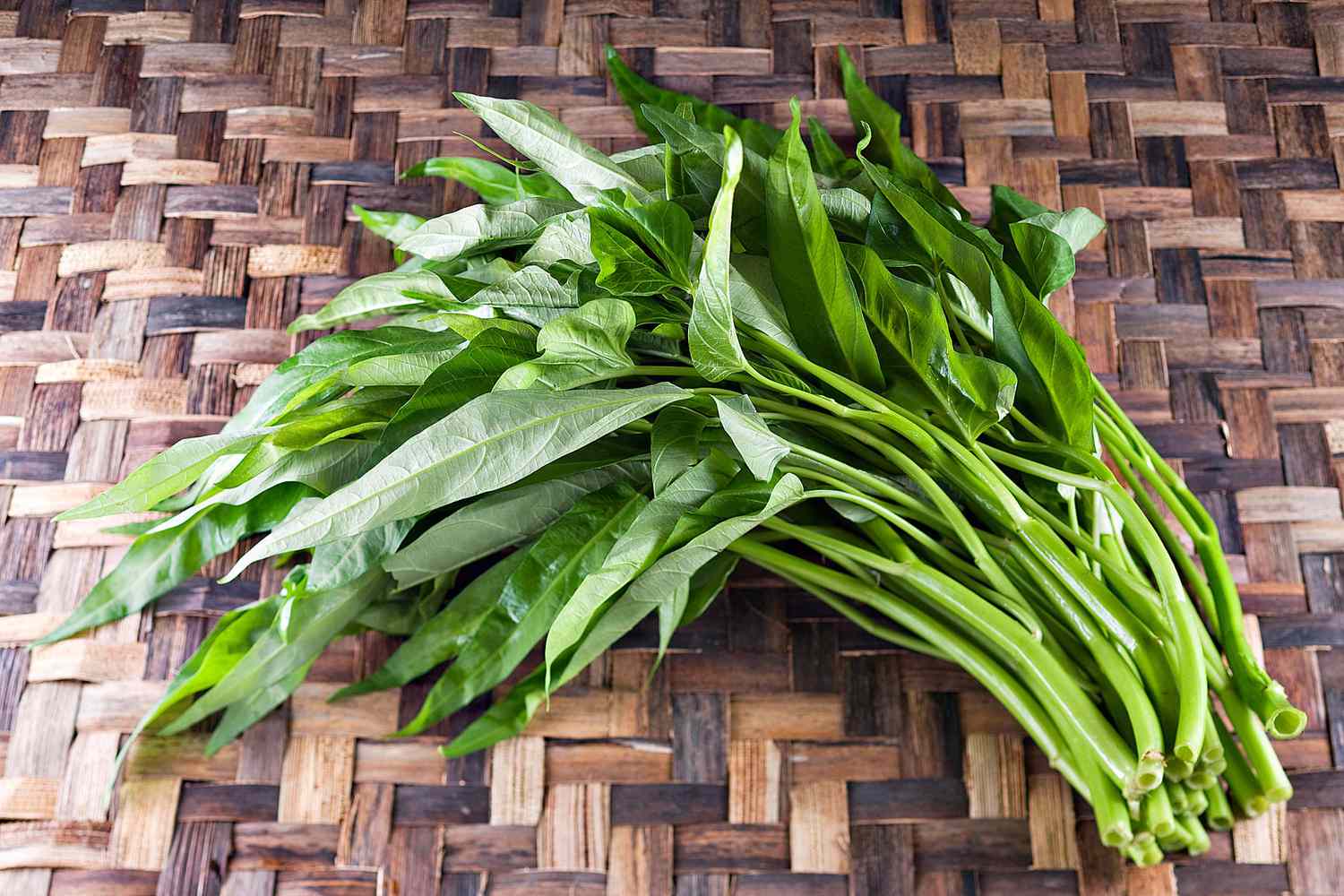 Water spinach, locally known as “rau muống,” is one of Vietnam’s most beloved leafy greens. Thriving in the water-rich Mekong Delta, this vegetable is characterized by its tender shoots and hollow stems, which absorb flavors beautifully when cooked.
Among Vietnam vegetables, water spinach is incredibly versatile. One of the most popular preparations is stir-frying it with garlic, creating a simple yet iconic dish called “rau muống xào tỏi”. The greens are quickly cooked with minced garlic and a splash of fish sauce, resulting in a fragrant and slightly crunchy side dish. Another common way to enjoy it is boiled and served with fermented shrimp paste, a rustic yet flavorful pairing. Water spinach is also frequently added to soups and hot pots, where its mild, slightly sweet taste enhances the broth.
Beyond its culinary appeal, water spinach is packed with nutrients. It is rich in iron, making it beneficial for preventing anemia, and high in vitamin C, which boosts immunity and promotes healthy skin. Additionally, its fiber content supports digestion and gut health, making it a wholesome addition to any meal.
Water spinach, locally known as “rau muống,” is one of Vietnam’s most beloved leafy greens. Thriving in the water-rich Mekong Delta, this vegetable is characterized by its tender shoots and hollow stems, which absorb flavors beautifully when cooked.
Among Vietnam vegetables, water spinach is incredibly versatile. One of the most popular preparations is stir-frying it with garlic, creating a simple yet iconic dish called “rau muống xào tỏi”. The greens are quickly cooked with minced garlic and a splash of fish sauce, resulting in a fragrant and slightly crunchy side dish. Another common way to enjoy it is boiled and served with fermented shrimp paste, a rustic yet flavorful pairing. Water spinach is also frequently added to soups and hot pots, where its mild, slightly sweet taste enhances the broth.
Beyond its culinary appeal, water spinach is packed with nutrients. It is rich in iron, making it beneficial for preventing anemia, and high in vitamin C, which boosts immunity and promotes healthy skin. Additionally, its fiber content supports digestion and gut health, making it a wholesome addition to any meal.
#2 Vietnam Vegetables: Bitter Melon (Khổ Qua)
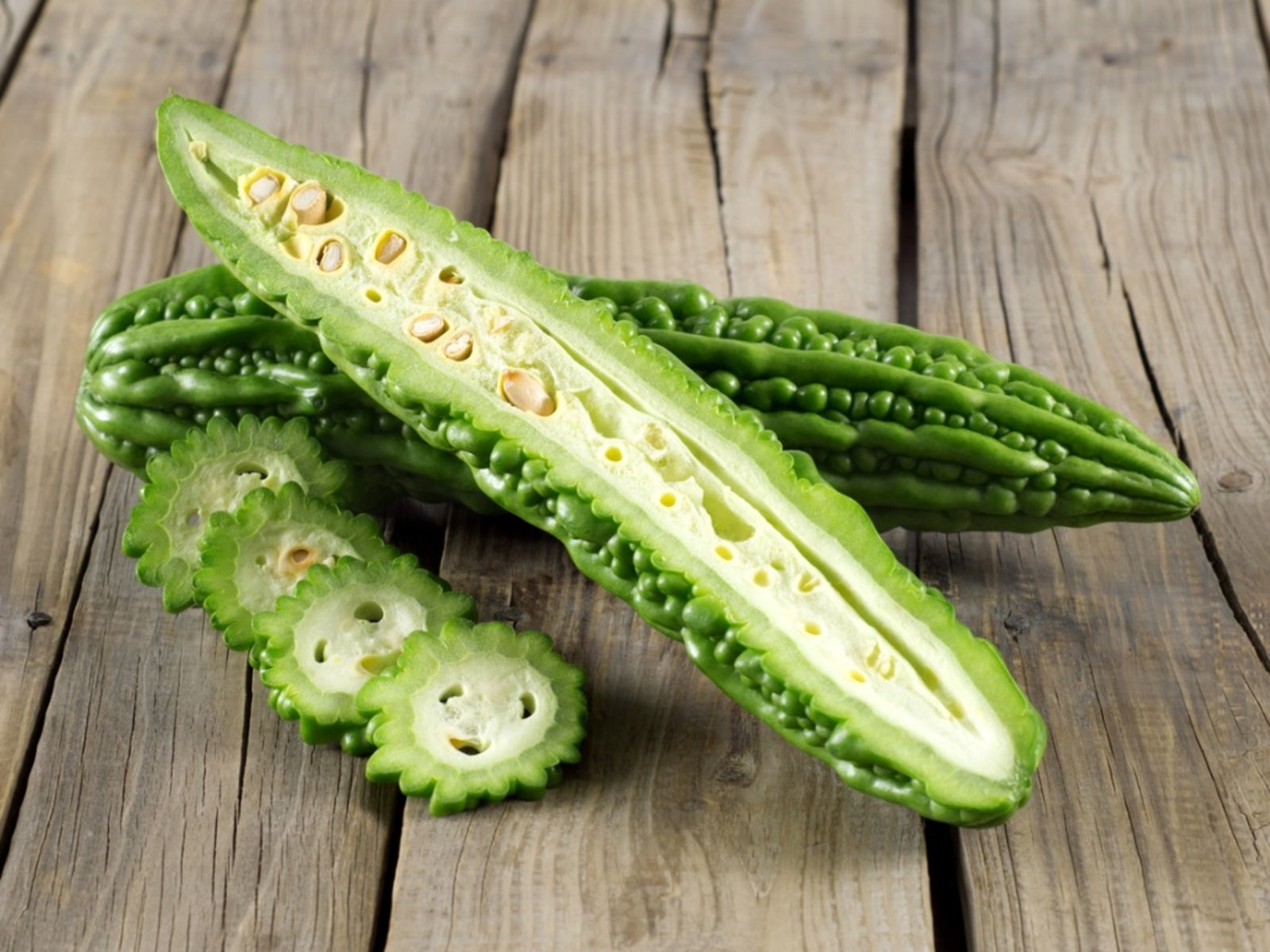 “Khổ qua” (bitter melon) is a polarizing vegetable due to its intense bitterness, but it’s a staple in Southern Vietnam vegetables dishes. Its bumpy, gourd-like appearance and sharp taste make it a unique and acquired ingredient.
Despite its challenging flavor, bitter melon is highly valued in Vietnamese cooking. One of the most famous dishes featuring it is “khổ qua nhồi thịt”, where the melon is hollowed out and stuffed with minced pork, mushrooms, and glass noodles before being simmered in a light broth. This preparation balances the bitterness with savory, umami-rich fillings. Another common way to enjoy bitter melon is stir-fried with eggs, a simple home-style dish that softens the vegetable’s harshness with the richness of scrambled eggs.
From a health perspective, bitter melon is renowned for its medicinal properties. It is believed to help regulate blood sugar levels, making it particularly beneficial for diabetics. Additionally, it supports liver function and detoxification, and its high antioxidant content helps combat inflammation. While its taste may be an acquired one, its health benefits make it worth trying.
“Khổ qua” (bitter melon) is a polarizing vegetable due to its intense bitterness, but it’s a staple in Southern Vietnam vegetables dishes. Its bumpy, gourd-like appearance and sharp taste make it a unique and acquired ingredient.
Despite its challenging flavor, bitter melon is highly valued in Vietnamese cooking. One of the most famous dishes featuring it is “khổ qua nhồi thịt”, where the melon is hollowed out and stuffed with minced pork, mushrooms, and glass noodles before being simmered in a light broth. This preparation balances the bitterness with savory, umami-rich fillings. Another common way to enjoy bitter melon is stir-fried with eggs, a simple home-style dish that softens the vegetable’s harshness with the richness of scrambled eggs.
From a health perspective, bitter melon is renowned for its medicinal properties. It is believed to help regulate blood sugar levels, making it particularly beneficial for diabetics. Additionally, it supports liver function and detoxification, and its high antioxidant content helps combat inflammation. While its taste may be an acquired one, its health benefits make it worth trying.
#3 Vietnam Vegetables: Malabar Spinach (Rau Mồng Tơi)
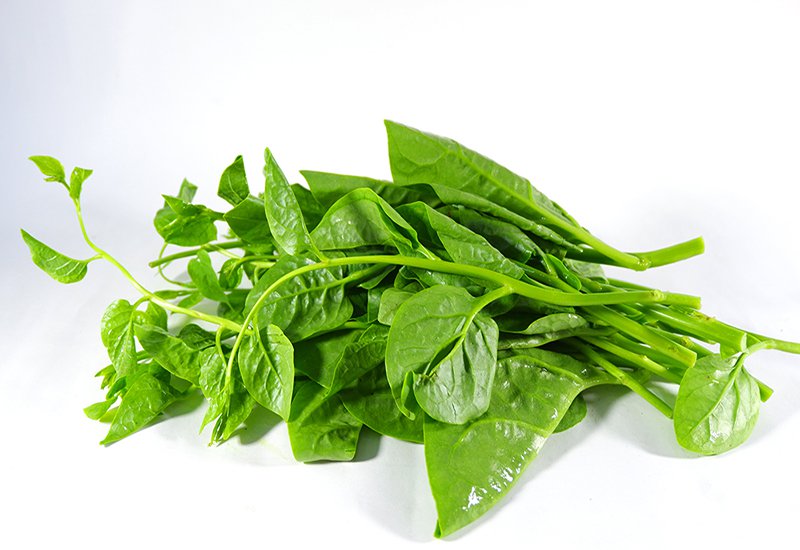 Unlike regular spinach, “rau mồng tơi” (Malabar spinach) is a climbing vine with thick, succulent leaves that release a natural gel-like consistency when cooked. It is especially popular in Northern Vietnam, where it thrives in the warm, humid climate.
Malabar spinach is most commonly used in soups, where its mucilaginous texture adds a unique thickness to the broth. One beloved dish is “canh cua rau mồng tơi”, a crab and Malabar spinach soup that combines the vegetable’s slippery texture with the sweet, delicate flavor of freshwater crab. The result is a light yet satisfying dish often enjoyed during Vietnam’s hot summers. Malabar spinach can also be stir-fried with garlic or shrimp, creating a quick and nutritious side dish.
Nutritionally, Malabar spinach is a powerhouse. It is rich in vitamins A and C, which promote eye health and strengthen the immune system. It also contains significant amounts of calcium and iron, supporting bone strength and blood health. Its natural gel-like quality is soothing to the digestive tract, making it a gentle and beneficial ingredient for gut health.
Unlike regular spinach, “rau mồng tơi” (Malabar spinach) is a climbing vine with thick, succulent leaves that release a natural gel-like consistency when cooked. It is especially popular in Northern Vietnam, where it thrives in the warm, humid climate.
Malabar spinach is most commonly used in soups, where its mucilaginous texture adds a unique thickness to the broth. One beloved dish is “canh cua rau mồng tơi”, a crab and Malabar spinach soup that combines the vegetable’s slippery texture with the sweet, delicate flavor of freshwater crab. The result is a light yet satisfying dish often enjoyed during Vietnam’s hot summers. Malabar spinach can also be stir-fried with garlic or shrimp, creating a quick and nutritious side dish.
Nutritionally, Malabar spinach is a powerhouse. It is rich in vitamins A and C, which promote eye health and strengthen the immune system. It also contains significant amounts of calcium and iron, supporting bone strength and blood health. Its natural gel-like quality is soothing to the digestive tract, making it a gentle and beneficial ingredient for gut health.
#4 Vietnam Vegetables: Banana Flower (Bắp Chuối)
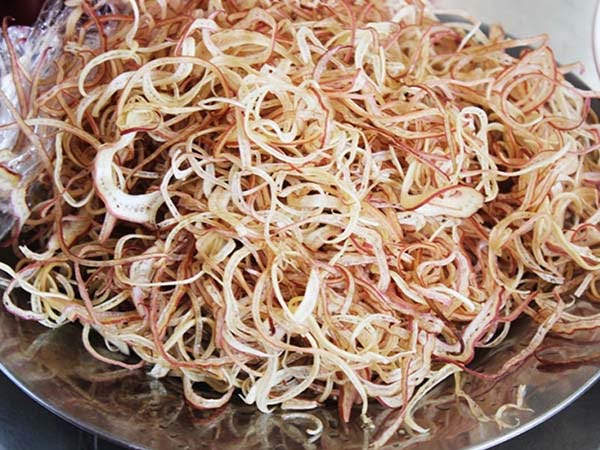 The banana flower (bắp chuối) is the beautiful purple blossom that grows at the end of banana clusters. While often overlooked in Western cuisine, it is a prized ingredient in Vietnam vegetables, offering a slightly tangy, astringent taste and a satisfying crunch.
In Vietnamese cooking, banana flower is most commonly used in salads. One standout dish is “nộm bắp chuối”, where the flower is thinly sliced and mixed with herbs, pork, and sometimes shrimp, then dressed with a tangy lime and fish sauce dressing. The result is a refreshing and texturally complex appetizer. Banana flower is also added to sour soups, where its crispness holds up well in the hot broth, contributing a subtle tartness.
Beyond its culinary uses, banana flower is valued for its health benefits. It is high in fiber, aiding digestion, and is traditionally believed to support lactation in nursing mothers. Additionally, its antioxidant properties help reduce inflammation, making it a nutritious and functional ingredient.
The banana flower (bắp chuối) is the beautiful purple blossom that grows at the end of banana clusters. While often overlooked in Western cuisine, it is a prized ingredient in Vietnam vegetables, offering a slightly tangy, astringent taste and a satisfying crunch.
In Vietnamese cooking, banana flower is most commonly used in salads. One standout dish is “nộm bắp chuối”, where the flower is thinly sliced and mixed with herbs, pork, and sometimes shrimp, then dressed with a tangy lime and fish sauce dressing. The result is a refreshing and texturally complex appetizer. Banana flower is also added to sour soups, where its crispness holds up well in the hot broth, contributing a subtle tartness.
Beyond its culinary uses, banana flower is valued for its health benefits. It is high in fiber, aiding digestion, and is traditionally believed to support lactation in nursing mothers. Additionally, its antioxidant properties help reduce inflammation, making it a nutritious and functional ingredient.
#5 Vietnam Vegetables: Lotus Root (Ngó Sen)
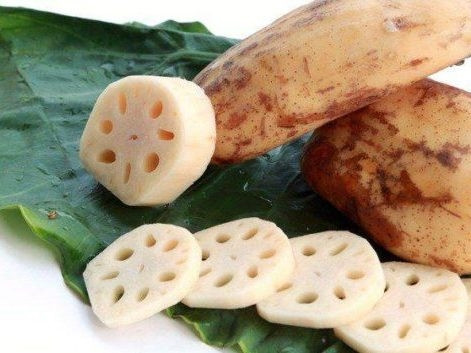 “Ngó sen” (lotus root) is harvested from the submerged stems of the lotus plant, commonly found in the freshwater lakes of the Mekong Delta. With its crisp texture and mildly sweet flavor, it is considered a delicacy in Vietnam vegetables.
Lotus root is frequently featured in salads, most notably “gỏi ngó sen”, where it is thinly sliced and combined with shrimp, pork, and fresh herbs, then tossed in a tangy dressing. The root’s natural crunch provides a refreshing contrast to the other ingredients. It is also stir-fried with shrimp or pork, where it retains its crispness while absorbing the savory flavors of the dish.
Nutritionally, lotus root is an excellent source of dietary fiber, promoting healthy digestion. It is also high in vitamin C, which boosts immunity, and contains potassium, supporting heart health. Its unique texture and nutritional profile make it a standout ingredient in Vietnamese cooking.
“Ngó sen” (lotus root) is harvested from the submerged stems of the lotus plant, commonly found in the freshwater lakes of the Mekong Delta. With its crisp texture and mildly sweet flavor, it is considered a delicacy in Vietnam vegetables.
Lotus root is frequently featured in salads, most notably “gỏi ngó sen”, where it is thinly sliced and combined with shrimp, pork, and fresh herbs, then tossed in a tangy dressing. The root’s natural crunch provides a refreshing contrast to the other ingredients. It is also stir-fried with shrimp or pork, where it retains its crispness while absorbing the savory flavors of the dish.
Nutritionally, lotus root is an excellent source of dietary fiber, promoting healthy digestion. It is also high in vitamin C, which boosts immunity, and contains potassium, supporting heart health. Its unique texture and nutritional profile make it a standout ingredient in Vietnamese cooking.
#6 Vietnam Vegetables: Jute Mallow (Rau Đay)
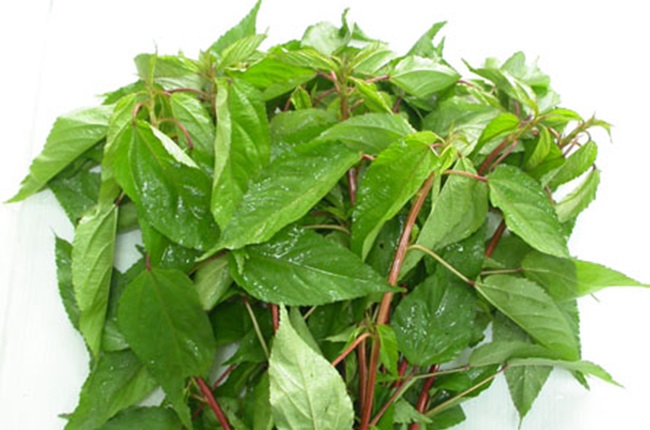 Jute mallow, known as “rau đay” in Vietnamese, is a leafy green that holds a special place in Northern Vietnam vegetables. What makes this vegetable unique is its natural mucilaginous quality – when cooked, it releases a silky texture similar to okra. This characteristic makes it particularly valued in soups, where it helps thicken the broth naturally.
The most iconic preparation of jute mallow is in “canh cua rau đay”, a crab and jute mallow soup that’s considered a summer staple in Northern Vietnam. The vegetable’s slippery texture perfectly complements the sweet, delicate flavor of freshwater crab, creating a dish that’s both comforting and refreshing. In rural areas, it’s also commonly cooked with minced pork or simply stir-fried with garlic as a quick side dish.
From a nutritional standpoint, jute mallow offers impressive benefits. It’s exceptionally high in dietary fiber, which promotes healthy digestion and gut function. The vegetable is also packed with antioxidants that help protect cells from damage, and its high water content makes it hydrating, particularly valuable in Vietnam’s tropical climate. Traditional medicine values jute mallow for its cooling properties, often recommending it during hot weather to help regulate body temperature.
Jute mallow, known as “rau đay” in Vietnamese, is a leafy green that holds a special place in Northern Vietnam vegetables. What makes this vegetable unique is its natural mucilaginous quality – when cooked, it releases a silky texture similar to okra. This characteristic makes it particularly valued in soups, where it helps thicken the broth naturally.
The most iconic preparation of jute mallow is in “canh cua rau đay”, a crab and jute mallow soup that’s considered a summer staple in Northern Vietnam. The vegetable’s slippery texture perfectly complements the sweet, delicate flavor of freshwater crab, creating a dish that’s both comforting and refreshing. In rural areas, it’s also commonly cooked with minced pork or simply stir-fried with garlic as a quick side dish.
From a nutritional standpoint, jute mallow offers impressive benefits. It’s exceptionally high in dietary fiber, which promotes healthy digestion and gut function. The vegetable is also packed with antioxidants that help protect cells from damage, and its high water content makes it hydrating, particularly valuable in Vietnam’s tropical climate. Traditional medicine values jute mallow for its cooling properties, often recommending it during hot weather to help regulate body temperature.
#7 Vietnam Vegetables: Vietnamese Coriander (Rau Răm)
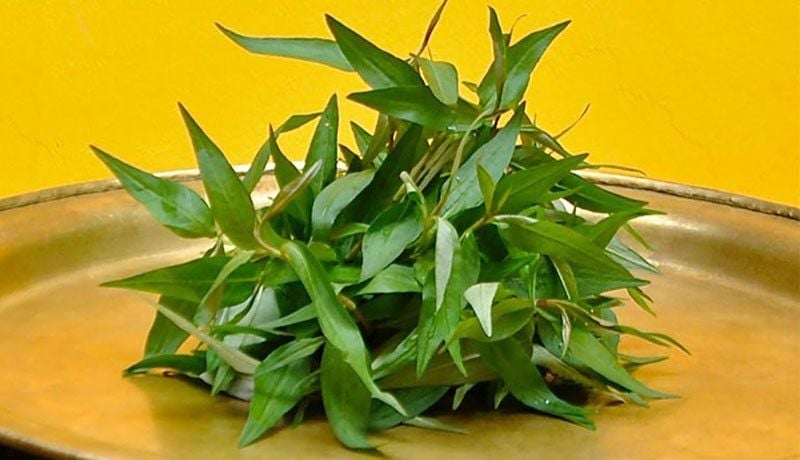 Vietnamese coriander, or “rau răm”, is an aromatic herb that plays a crucial role in balancing flavors in Vietnam vegetables. Unlike its Western counterpart, this herb has a distinctly peppery taste with citrusy undertones and a slightly astringent quality that makes it perfect for cutting through rich dishes.
This herb is particularly beloved in Southern Vietnam, where it’s used as a finishing touch for many dishes. You’ll often find it garnishing “bún thịt nướng” (grilled pork noodles), adding its signature sharpness to balance the sweet marinade of the meat. It’s also essential in duck dishes and snail preparations, where its bold flavor stands up to the gaminess. Perhaps most famously, it’s the key herb in “gỏi gà rau răm”, a chicken salad where its peppery notes elevate the dish.
Beyond its culinary uses, Vietnamese coriander has long been valued in traditional medicine. It’s believed to aid digestion and reduce bloating, often served with heavy or fatty foods to help the body process them. The herb also possesses antibacterial properties and has been traditionally used to alleviate cold symptoms. Its high concentration of antioxidants adds to its health-promoting reputation.
Vietnamese coriander, or “rau răm”, is an aromatic herb that plays a crucial role in balancing flavors in Vietnam vegetables. Unlike its Western counterpart, this herb has a distinctly peppery taste with citrusy undertones and a slightly astringent quality that makes it perfect for cutting through rich dishes.
This herb is particularly beloved in Southern Vietnam, where it’s used as a finishing touch for many dishes. You’ll often find it garnishing “bún thịt nướng” (grilled pork noodles), adding its signature sharpness to balance the sweet marinade of the meat. It’s also essential in duck dishes and snail preparations, where its bold flavor stands up to the gaminess. Perhaps most famously, it’s the key herb in “gỏi gà rau răm”, a chicken salad where its peppery notes elevate the dish.
Beyond its culinary uses, Vietnamese coriander has long been valued in traditional medicine. It’s believed to aid digestion and reduce bloating, often served with heavy or fatty foods to help the body process them. The herb also possesses antibacterial properties and has been traditionally used to alleviate cold symptoms. Its high concentration of antioxidants adds to its health-promoting reputation.
#8 Vietnam Vegetables: Taro Stems (Bạc Hà)
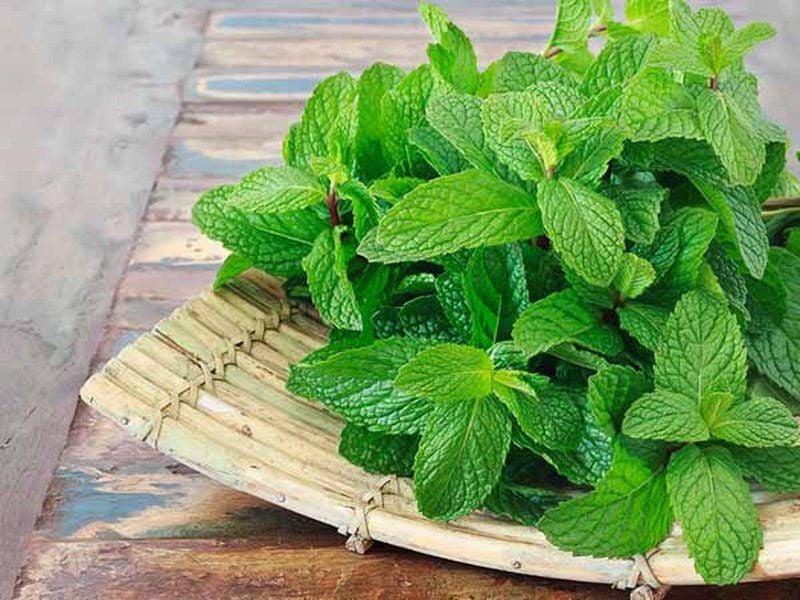 Taro stems, called “bạc hà” in Vietnamese, are an often-overlooked but incredibly versatile vegetable in Southern Vietnamese cooking. These spongy, fibrous stems have a remarkable ability to absorb flavors while maintaining a satisfying texture, making them ideal for soups and stews.
In the Mekong Delta region, taro stems are most famously used in “canh chua”, the beloved sweet and sour soup. The stems soak up the tangy tamarind-based broth while contributing their own subtle, earthy flavor. Another popular preparation is stir-frying them with shrimp paste, creating a dish with deep umami flavors that contrast beautifully with the stems’ mild taste. They’re also commonly pickled, resulting in a crunchy, slightly sour condiment.
Nutritionally, taro stems offer several advantages. They’re very low in calories, making them excellent for weight management, while their high fiber content promotes digestive health. The stems contain notable amounts of potassium, which helps regulate blood pressure, and various B vitamins that support energy metabolism. Their porous texture also makes them effective at binding to and helping eliminate toxins from the digestive system.
Taro stems, called “bạc hà” in Vietnamese, are an often-overlooked but incredibly versatile vegetable in Southern Vietnamese cooking. These spongy, fibrous stems have a remarkable ability to absorb flavors while maintaining a satisfying texture, making them ideal for soups and stews.
In the Mekong Delta region, taro stems are most famously used in “canh chua”, the beloved sweet and sour soup. The stems soak up the tangy tamarind-based broth while contributing their own subtle, earthy flavor. Another popular preparation is stir-frying them with shrimp paste, creating a dish with deep umami flavors that contrast beautifully with the stems’ mild taste. They’re also commonly pickled, resulting in a crunchy, slightly sour condiment.
Nutritionally, taro stems offer several advantages. They’re very low in calories, making them excellent for weight management, while their high fiber content promotes digestive health. The stems contain notable amounts of potassium, which helps regulate blood pressure, and various B vitamins that support energy metabolism. Their porous texture also makes them effective at binding to and helping eliminate toxins from the digestive system.
#9 Vietnam Vegetables: Sweet Potato Greens (Rau Khoai Lang)
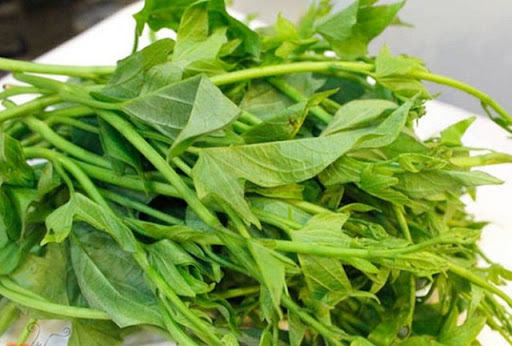 Sweet potato greens, known as “rau khoai lang”, represent the thrifty ingenuity of Vietnam vegetables – using every edible part of the plant. While Western cuisines typically focus on the tuber, Vietnamese cooks prize the tender leaves and shoots of the sweet potato vine as a nutritious green vegetable.
These greens are especially popular in rural areas, where they’re often simply stir-fried with garlic for a quick, nutritious side dish. Another common preparation involves briefly boiling them and serving them with a fermented soybean or fish sauce dip. In some regions, they’re added to soups or used as wrappers for grilled meats. The leaves have a mild, slightly sweet flavor with a texture similar to spinach when cooked.
Nutritionally, sweet potato greens are surprisingly rich in vitamins B6 and C, as well as riboflavin. They contain more protein than many other leafy greens, and their high levels of antioxidants like beta-carotene contribute to eye health and immune function. Traditional medicine values them for their cooling properties and often recommends them during recovery from illness.
Sweet potato greens, known as “rau khoai lang”, represent the thrifty ingenuity of Vietnam vegetables – using every edible part of the plant. While Western cuisines typically focus on the tuber, Vietnamese cooks prize the tender leaves and shoots of the sweet potato vine as a nutritious green vegetable.
These greens are especially popular in rural areas, where they’re often simply stir-fried with garlic for a quick, nutritious side dish. Another common preparation involves briefly boiling them and serving them with a fermented soybean or fish sauce dip. In some regions, they’re added to soups or used as wrappers for grilled meats. The leaves have a mild, slightly sweet flavor with a texture similar to spinach when cooked.
Nutritionally, sweet potato greens are surprisingly rich in vitamins B6 and C, as well as riboflavin. They contain more protein than many other leafy greens, and their high levels of antioxidants like beta-carotene contribute to eye health and immune function. Traditional medicine values them for their cooling properties and often recommends them during recovery from illness.
#10 Vietnam Vegetables: Pennywort (Rau Má)
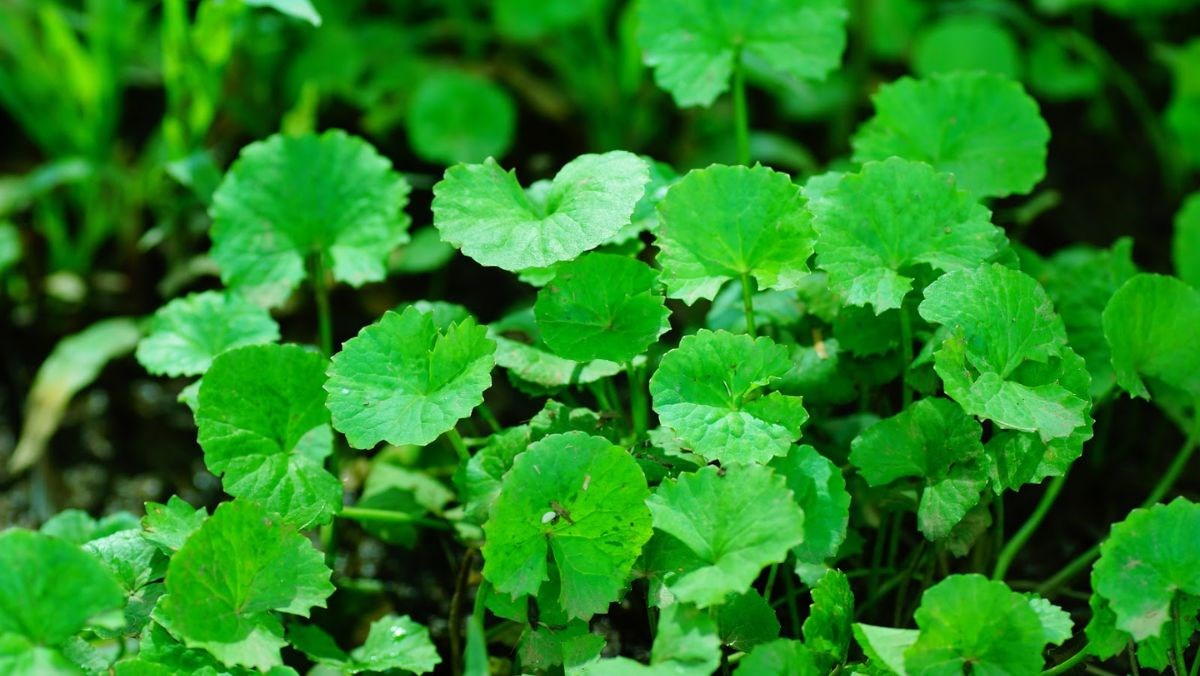 Pennywort, or “rau má”, is a creeping herb that grows abundantly in Vietnam’s moist, shaded areas. This small, fan-shaped leaf has been used for centuries in both culinary and medicinal applications, prized for its slightly bitter, earthy flavor and remarkable health properties.
Within the Vietnam vegetables, pennywort is most commonly consumed as a fresh juice (“nước rau má”), often blended with sugar and served over ice as a refreshing drink. The leaves are also used raw in salads, where their crisp texture and herbal flavor add complexity. Some innovative chefs have begun incorporating them into smoothies or using them as garnishes for modern Vietnamese dishes.
Medicinally, pennywort is renowned in traditional practices for its cooling properties. It’s frequently used to alleviate symptoms of heatstroke and to purify the blood. Modern research has confirmed some of its traditional uses, showing that it can improve circulation and potentially enhance cognitive function. The herb is also rich in compounds that may support skin health and wound healing when applied topically.
Pennywort, or “rau má”, is a creeping herb that grows abundantly in Vietnam’s moist, shaded areas. This small, fan-shaped leaf has been used for centuries in both culinary and medicinal applications, prized for its slightly bitter, earthy flavor and remarkable health properties.
Within the Vietnam vegetables, pennywort is most commonly consumed as a fresh juice (“nước rau má”), often blended with sugar and served over ice as a refreshing drink. The leaves are also used raw in salads, where their crisp texture and herbal flavor add complexity. Some innovative chefs have begun incorporating them into smoothies or using them as garnishes for modern Vietnamese dishes.
Medicinally, pennywort is renowned in traditional practices for its cooling properties. It’s frequently used to alleviate symptoms of heatstroke and to purify the blood. Modern research has confirmed some of its traditional uses, showing that it can improve circulation and potentially enhance cognitive function. The herb is also rich in compounds that may support skin health and wound healing when applied topically.
Conclusion
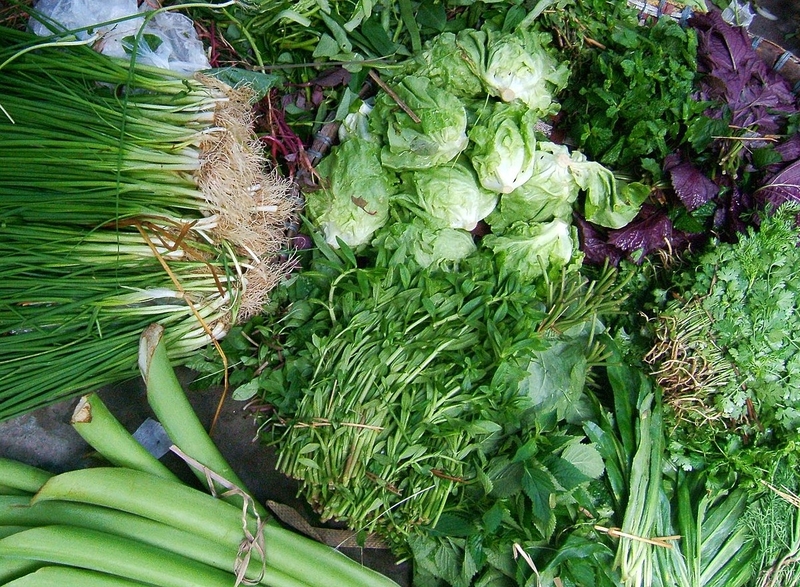 Vietnam vegetables are more than just ingredients – they are a reflection of the country’s agricultural richness, culinary creativity, and deep-rooted wellness traditions. From the crisp lotus root to the mucilaginous jute mallow, each vegetable offers unique flavors and health benefits. Incorporating these greens into your diet can introduce you to new textures and tastes while boosting your nutrition.
So next time you visit a Vietnamese market or restaurant, don’t hesitate to try these vibrant, nutrient-packed greens! Or if you cannot decide what to eat and where to find these Vietnam vegetables, try booking a trip with us at YESD Travel – we curate trips to every guest’s liking while making sure every new experience is still authentically Vietnamese – and you can enjoy your “green” trip to the fullest.
Vietnam vegetables are more than just ingredients – they are a reflection of the country’s agricultural richness, culinary creativity, and deep-rooted wellness traditions. From the crisp lotus root to the mucilaginous jute mallow, each vegetable offers unique flavors and health benefits. Incorporating these greens into your diet can introduce you to new textures and tastes while boosting your nutrition.
So next time you visit a Vietnamese market or restaurant, don’t hesitate to try these vibrant, nutrient-packed greens! Or if you cannot decide what to eat and where to find these Vietnam vegetables, try booking a trip with us at YESD Travel – we curate trips to every guest’s liking while making sure every new experience is still authentically Vietnamese – and you can enjoy your “green” trip to the fullest.